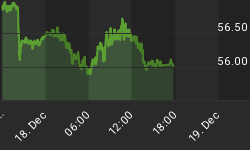As a general rule, the most successful man in life is the man who has the best information.
So what is a pound of copper (Cu) worth in the ground (in situ) to an exploration or development story?
Analyst Mike Bandrowski at Clarus Securities shows a chart suggesting the price of an average pound of copper in the ground between a few South American copper deposits is $0.04.
Why are some pounds worth more than others - are there recognizable intangibles assets that are imperative to build a mine and maximize shareholder value? This author believes if you have the operational team and financial partners to move into production you can potentially create many more times shareholder value above and beyond the average exploration and development company.
For example:
Company XYZ - with few or no recognizable intangibles assets - has 5 billion lbs of copper and gets bought out at .04 per lb - the company would be worth $200,000,000.00.
On the flip side, the assets of a company such as operational experience, speed to production advantage and in place financial partners for production are the "intangibles" that ultimately create the most shareholder value.
Assume XYZ's project could support a 250M lb per year copper producer netting $1.50 per lb in cash flow and has the intangibles assets of management that can and will take it all the way down the development path to a mine - their operational experience and deep pocketed financial partners giving them a speed to production advantage over their peers.
250M lbs X $1.50 per lb = $375M in cash flow. Most analysts would suggest a five times cash flow multiple implying a $1.875B company. This could create a producing company potentially valued many times more than a deposit sitting there waiting to be purchased.
This is why I like the potential of an AQM Copper (TSX.V - AQM). Management has a combined 280 years of mining experience. Bruce Turner (former President of BHP Billiton's Minera Escondida) played a significant role in the development and management of Escondida for over 19 years - which became the world's largest copper producing mine. Juan Villarzu was the Chairman of Codelco - the world's largest copper company for nine years. The rest of AQM's management team is equally experienced in their respective fields - there are officers and mine operators from Codelco and geologists who have run the drill programs for several high profile South American deposits.
As operator of the Zafranal project AQM is working on developing something substantial with 50/50 JV partner Teck Resources (TSX - TCK). To date the Zafranal Main Zone has been drilled out to 3300 meters by up to 600 meters wide with thicknesses ranging from 50 - 150 meters.
Wonder why Teck wanted to have AQM as their exclusive partner and operator of Zafranal? The reason is twofold: Drilling results have been outstanding and with the operational guidance of AQM the project can have a much quicker timeline to production than if a major was moving it forward at this stage.
Without the bureaucratic red tape of a large mining company stalling development, AQM can advance Zafranal through final feasibility much quicker than a major could. One only needs to look at Teck's recent acquisition of the Relincho project in 2008. Since acquisition, it took Teck almost one year to complete a scoping study (with no drilling at all in 2009). AQM expects to have their Zafranal scoping study completed by the end of Q4 2010!
More recently AQM announced two significant new discoveries, at Sicera Sur and Sicera Norte, within the Zafranal Property boundaries and in close proximity to the Main Zone. Drilling is to start soon testing the size/grade potential of the mineralized zones of these satellite areas as their proximity to the Main Zone could mean additional mine life.
To date, Zafranal, in this authors opinion, shows excellent potential to be a robust, economic deposit capable of supporting production. The Zafranal Main Zone remains open in multiple directions and there is a higher grade area - perhaps a starter pit - of close to 1% Cu.
Conclusion
In the fall of 2009, before AQM went to work on Zafranal, there was no way to effectively quantify and value the intangibles of the company. The deposit had seen limited work (36 holes by Teck in 2004) and the tangible asset had yet to deliver and give a valuation to the company.
Most juniors look to drill and sell a deposit and have no real significant intangibles to contribute to a valuation. However, with 280 years of combined management experience comes operational experience, speed to production advantages and a financial partner further de-risking the project.
What does that mean to AQM shareholders?
As Clarus securities put it "We feel the stock is significantly undervalued compared to its peers and should be trading between 75% and 100% above its current level. We also note that due to the project location, infrastructure and management team will likely result in Zafranal going into production before any of the deposits in its peer group."
AQM Copper TSX.V - AQM and its Zafranal joint venture with Teck Resources should be on every investors radar screen.
Is it on yours?
Richard Mills does not own shares in any company mentioned in this article.
AQM Copper is not an advertiser on, or sponsor of, aheadoftheherd.com
If you're interested in the junior resource and bio-tech markets and would like to learn more please come and visit us at aheadoftheherd.com
















